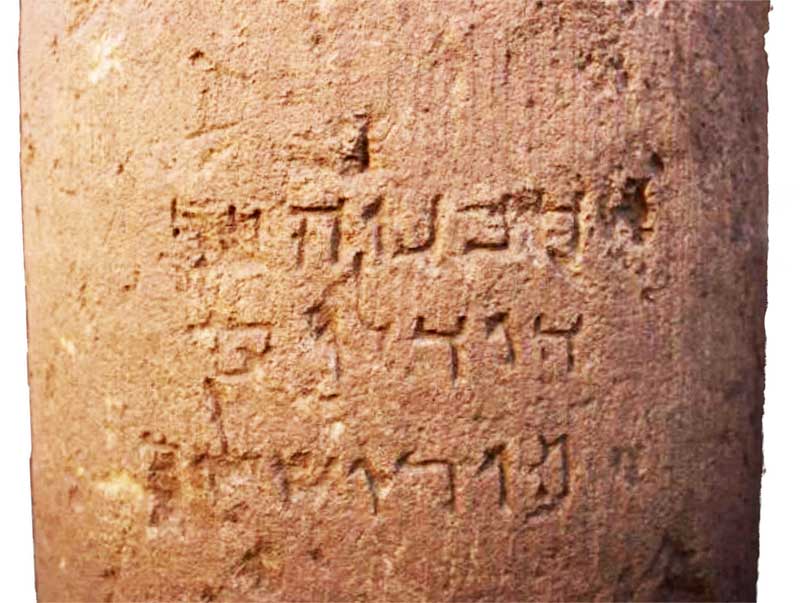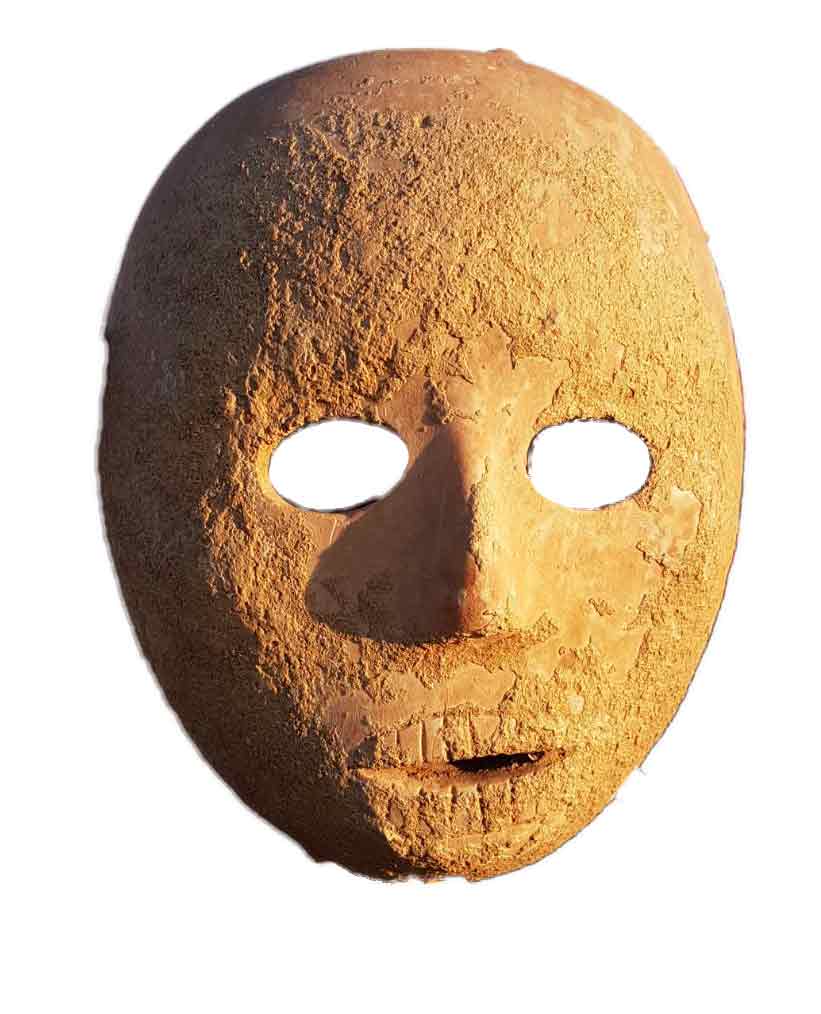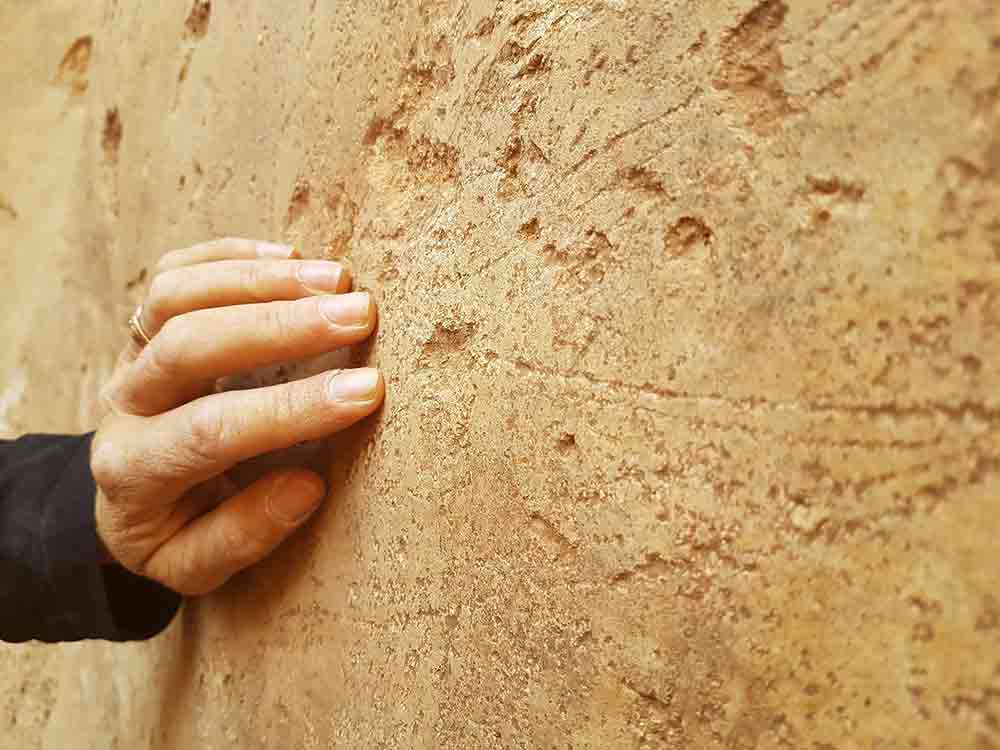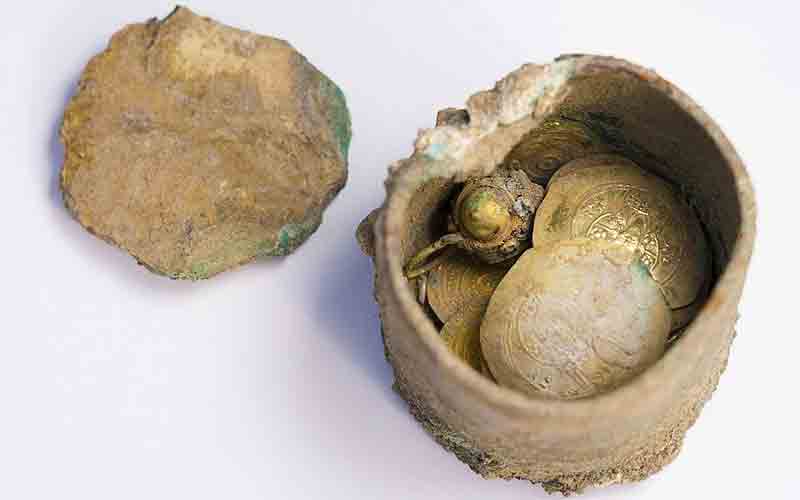Second Temple ‘Jerusalem’ Inscription Exhibited to the Public
A unique stone inscription dating to the Second Temple Period, mentioning Jerusalem in Hebrew letters and using the spelling as we know it today ((ירושלים), was found last winter near the International Convention Center, during an excavation directed by Danit Levy from the Israel Antiquities Authority. During the excavation, the foundations of a Roman structure supported by columns were uncovered. On one of the stone column drums an Aramaic inscription appears. The inscription is written in Hebrew letters typical of the late Second Temple Period (1st Century CE) and reads: “Hananiah son of Dodalos of Jerusalem”. The drum was probably reused in the late Roman structure. The inscription is now on display for the public at the Israel Museum in Jerusalem.

(Danit Levy, Israel Antiquities Authority.)
A Neolithic Stone Mask Was Found in the Southern Hebron Hills
Information regarding the discovery of a Neolithic stone mask (7500-6000 BCE) by an Israeli citizen led the Antiquities Theft Prevention Unit (ATPU) of the Israel Antiquities Authority to trace its origins at the beginning of 2018. During the investigation the finder led the Unit’s inspectors to the place where he found the mask in the Pnei Hever region of the southern Hebron Hills. There are presently 15 Neolithic stone masks across the globe known to researchers, of which only three come from clear archaeological contexts, including this one. According to Ronit Lupu of the ATPU “The find is significant because we know the archaeological context, and this is something that is of the utmost importance in Archaeology”. Dr. Omry Barzilai, head of the IAA Archaeological Research Department said that “In Neolithic sites we’ve identified a lot of objects that are related to ritual activity, therefore we believe that such objects—like this mask—are actually functional and can be connected to funerary rituals”.

(Gideon Goldenberg, Israel Antiquities Authority.)
Graffiti of Ships Were Found inside a Roman Period Cistern at Be’er Sheva
During an excavation headed by Dr. Davida Eisenberg-Degen of the Israel Antiquities Authority in modern Be’er Sheva, a Roman era cistern was found. The cistern dates to the 1st or 2nd century C.E., based on the hewing techniques of the installation and staircase out of the bedrock and the plastering texture. The cistern was probably created to store water for a Roman-period site found 800 meters away. Thirteen ships, one sailor, and several animals are meticulously carved into the plaster covering the cistern walls. According to the excavator the ship graffiti are technically appropriate and are in correct proportion, suggesting that the roman-era artist had actual knowledge of ship construction.

(Davida Eisenberg-Degen, Israel Antiquities Authority.)
A Fatimid Coin Hoard Revealed in Caesarea
A hoard of 24 gold coins and a gold earring was recently discovered in a bronze pot during ongoing excavation and conservation work in the ancient harbor of Caesarea led by Dr. Peter Gendelman and Mohammed Hatar from the Israel Antiquities Authority in cooperation with the Caesarea Development Corporation and the Israel Nature and Parks Authority. The bronze pot in which the hoard was placed was secreted between stones in a 1.5 meter-deep subterranean watering hole. Found among the hoard of Fatimid dinars are six extremely rare 11th century Byzantine coins from the reign of the Byzantine Emperor Michael VII Doukas (1071–1079), of which less than a handful have been discovered in Israel. Those coins hint at contacts or potential trade relations between Caesarea and Constantinople during the period. According to IAA archaeologists, it seems that the hoard was hidden during the Crusader conquest of the city from the Fatimid Empire in 1101 CE.

(Yaniv Berman, courtesy of the Caesarea Development Corporation.)
A Trove of Hellenistic Bullae Found in Mareshah, Judaean Foothills
An enormous trove of 1,020 clay seal impressions was found recently during exploration of a newly discovered seven-room cave complex at the ancient city of Maresha by Dr. Ian Stern, director of the Archaeological Seminars Institute. The unfired bullae sealed the knots of papyrus scrolls that did not survive due to the moist atmosphere in the cave. An initial survey of 300 of the 1,020 bullae indicates that they were strung on documents from a large private archive. The seals primarily date from the 2nd century BCE and depicted images of gods, including Athena, Aphrodite, and Apollo, as well as erotic themes, masks, standing figures, cornucopiae, Greek letters and numbers indicating dates. According to Dr. Stern “It really underlines the fact that the city was a major cosmopolitan center; an inland city with indelible ties to the outside world”.
Dr Eitan Klein is the Deputy Director of the Unit for the Prevention of Antiquities Looting in the Israel Antiquities Authority, an Archaeologist of the classical periods and a Lecturer at the Land of Israel Department at Ashqelon Academic College

